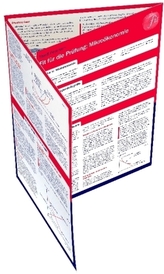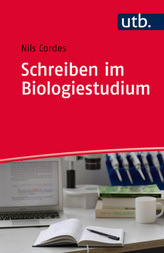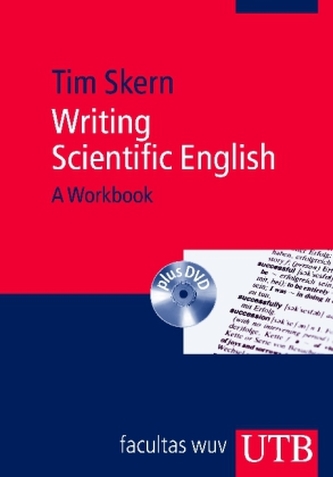Writing Scientific English, w. DVD-ROM
7
%
431 Kč 462 Kč
Sleva až 70% u třetiny knih
Contents 8§Chapter 1 11§An introduction to scientific English 11§1.1 Advantages and disadvantages of English 11§1.1.1 British or American? 15§1.2 Formal English, the language of science 17§1.2.1 Complete sentences 17§1.2.2 Punctuation marks 18§1.2.3 Write out all verb forms 21§1.2.4 Avoid starting sentences with and , but , because or so 21§1.2.5 Avoid ending sentences with too , also , though or yet 22§1.2.6 Avoid get 23§1.2.7 Avoid vagueness, sensationalism and exaggeration 23§1.2.8 Using the and a 24§1.3 Words for writing scientific English 27§1.4 Take-home messages from Chapter 1 30§1.5 References 30§1.6 Improvements to exercises 30§Chapter 2 33§Writing clear scientific English 33§2.1 Eight guidelines for improving your writing technique 33§2.1.1 Make a plan 33§2.1.2 Use a clean and legible layout 34§2.1.3 Use paragraphs 35§2.1.4 Write simple sentences 35§2.1.5 Write positive sentences 37§2.1.6 Write active sentences 38§2.1.7 Omit needless words 39§2.1.8 Read and think about your work 40§2.2 Just to make you feel better 41§2.3 Take-home messages from Chapter 2 44§2.4 References 44§2.5 Improvements to exercises 44§Chapter 3 47§Applying the fundamentals 47§3.1 Summarising the text Fighting for Breath 47§3.2 Improving four summaries of Fighting for Breath 50§3.3 Writing abstracts for scientific presentations 59§3.4 Improving four abstracts 60§3.5 What is science? 65§3.6 Improving four texts on What is science? 69§3.7 Take-home messages from Chapter 3 77§3.8 References 78§Chapter 4 79§Constructing a scientific manuscript 79§4.1 The process of publishing original data in a scientific manuscript 79§4.2 Planning a scientific manuscript 84§4.3 Writing a scientific manuscript 90§4.3.1 Prepare the figures and tables 90§4.3.2 Describe the figures and tables 94§4.3.3 Write a first draft of the results 95§4.3.4 Write a first draft of the discussion 98§4.3.5 What about writing a combined section entitled results and discussion ? 100§4.3.6 Write a first draft of the introduction 103§4.3.7 Write a first draft of the title , the abstract and the keywords 104§4.3.8 Write a first draft of materials and methods 107§4.3.9 List and sort the references 109§4.3.10 Write the acknowledgements 111§4.3.11 Write the abbreviations 111§4.4 Assembling and improving the model manuscript 112§4.4.1 First draft of the model manuscript 114§4.5 Editing and refining a scientific manuscript 119§4.5.1 Improved model manuscript 120§4.6 Take-home messages from Chapter 4 124§4.7 References 125§Chapter 5 127§Practising writing and improving scientific manuscripts 127§5.1 Improving the quality of bread 127§5.2 Your views on human activity and global warming 133§5.3 Measuring biodiversity 137§5.4 Stereotypic Man 143§5.5 Searching for the best firewood to reduce global warming 148§5.6 Is there a connection between eating organic food and cigarette smoking? 154§5.7 Take-home messages from Chapter 5 160§5.8 References 161§Chapter 6 163§On your own 163§6.1 Resources 166§6.2 A reading list to improve your vocabulary and your scientific writing 169§6.3 References 177§Chapter 7 179§The scientific vocabulary of this book 179§7.1 Linking words 179§7.2 Words from the basic scientific lexicon 180§7.3 Words that extend the basic scientific lexicon 182§7.4 Words that you wish to add 183§Appendix 191§List of boxes 191 Chapter 1 11§§An introduction to scientific English 11§§1.1 Advantages and disadvantages of English 11§§1.1.1 British or American? 15§§1.2 Formal English, the language of science 17§§1.2.1 Complete sentences 17§§1.2.2 Punctuation marks 18§§1.2.3 Write out all verb forms 21§§1.2.4 Avoid starting sentences with 'and', 'but', 'because' or 'so' 21§§1.2.5 Avoid ending sentences with 'too', 'also', 'though' or 'yet' 22§§1.2.6 Avoid 'get' 23§§1.2.7 Avoid vagueness, sensationalism and exaggeration 23§§1.2.8 Using 'the' and 'a' 24§§1.3 Words for writing scientific English 27§§1.4 Take-home messages from Chapter 130 28§§1.5 References 30§§1.6 Improvements to exercises 30§§Chapter 2 33§§Writing clear scientific English 33§§2.1 Eight guidelines for improving your writing technique 33§§2.1.1 Make a plan 33§§2.1.2 Use a clean and legible layout 34§§2.1.3 Use paragraphs 35§§2.1.4 Write simple sentences 35§§2.1.5 Write positive sentences 37§§2.1.6 Write active sentences 38§§2.1.7 Omit needless words 39§§2.1.8 Read and think about your work 40§§2.2 Just to make you feel better 41§§2.3 Take-home messages from Chapter 2 44§§2.4 References 44§§2.5 Improvements to exercises 44§§Chapter 3 47§§Applying the fundamentals 47§§3.1 Summarising the text 'Fighting for Breath' 47§§3.2 Improving four summaries of 'Fighting for Breath' 50§§3.3 Writing abstracts for scientific presentations 59§§3.4 Improving four abstracts 60§§3.5 What is science? 65§§3.6 Improving four texts on 'What is science?' 69§§3.7 Take-home messages from Chapter 3 77§§3.8 References 78§§Chapter 4 79§§Constructing a scientific manuscript 79§§4.1 The process of publishing original data in a scientific manuscript 79§§4.2 Planning a scientific manuscript 84§§4.3 Writing a scientific manuscript 90§§4.3.1 Prepare the figures and tables 90§§4.3.2 Describe the figures and tables 94§§4.3.3 Write a first draft of the 'results' 95§§4.3.4 Write a first draft of the 'discussion' 98§§4.3.5 What about writing a combined section entitled 'results and discussion'? 100§§4.3.6 Write a first draft of the 'introduction' 103§§4.3.7 Write a first draft of the 'title', the 'abstract' and the 'keywords' 104§§4.3.8 Write a first draft of 'materials and methods' 107§§4.3.9 List and sort the references 109§§4.3.10 Write the 'acknowledgements' 111§§4.3.11 Write the 'abbreviations' 111§§4.4 Assembling and improving the model manuscript 112§§4.4.1 First draft of the model manuscript 114§§4.5 Editing and refining a scientific manuscript 119§§4.5.1 Improved model manuscript 120§§4.6 Take-home messages from Chapter 4 124§§4.7 References 125§§10 Chapter 5 127§§Practising writing and improving scientific manuscripts 127§§5.1 Improving the quality of bread 127§§5.2 Your views on human activity and global warming 133§§5.3 Measuring biodiversity 137§§5.4 Stereotypic Man 143§§5.5 Searching for the best firewood to reduce global warming 148§§5.6 Is there a connection between eating organic food and cigarette smoking? 154§§5.7 Take-home messages from Chapter 5 160§§5.8 References 161§§Chapter 6 163§§On your own 163§§6.1 Resources 166§§6.2 A reading list to improve your vocabulary and your scientific writing 169§§6.3 References 177§§Chapter 7 179§§The scientific vocabulary of this book 179§§7.1 Linking words 179§§7.2 Words from the basic scientific lexicon 180§§7.3 Words that extend the basic scientific lexicon 182§§7.4 Words that you wish to add 183§§Appendix 191§§List of boxes 191§§END
| Autor: | Skern, Tim |
| Nakladatel: | UTB |
| Rok vydání: | 2015 |
| Jazyk : | Angličtina |
| Vazba: | Paperback / softback |
| Počet stran: | 191 |
Mohlo by se vám také líbit..
-

Deutschlands Außen- und Sicherheitspo...
Gareis, Sven B.
-

Philosophie
Ruffing, Reiner
-

Hinduismus
Malinar, Angelika
-

Germanistische Sprachwissenschaft
Ernst, Peter
-

Einführung in die Berufspädagogik
Arnold, Rolf
-

Einladung zur Literaturwissenschaft
Vogt, Jochen
-

Fit für die Prüfung: Kosten- und Leis...
Friedl, Birgit
-

Kosten- und Leistungsrechnung
Schildbach, Thomas
-

Publizistik- und Kommunikationswissen...
Pürer, Heinz
-

Was Europa den Griechen verdankt
Thomas A. Szlezák
-

Das Portfolio als Reflexionsmedium fü...
Bräuer, Gerd
-

Schreiben im Biologiestudium
Cordes, Nils
-

Die Neuzeit 1789-1914
Juneja, Monica
-

Theaterwissenschaft
Kotte, Andreas
-

Einführung in die Stadt- und Raumsozi...
Löw, Martina
-

Soziale Arbeit
Brake, Roland





